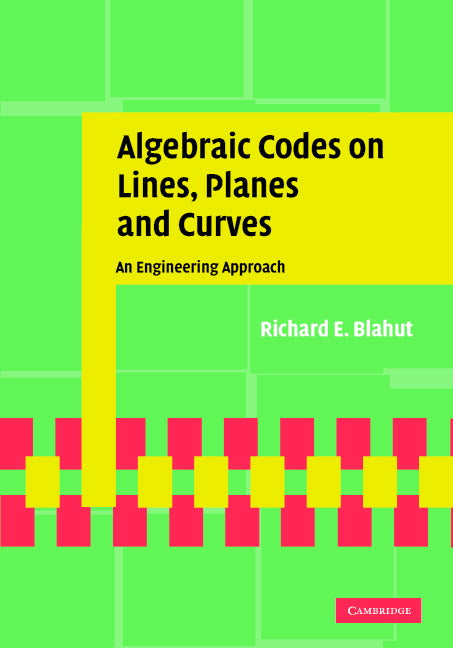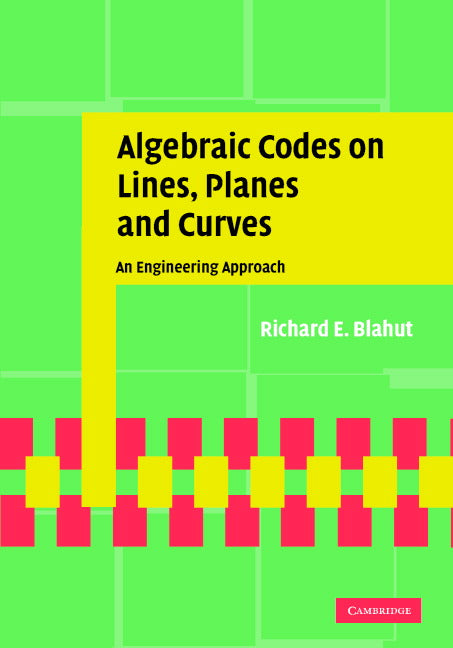Freshly Printed - allow 4 days lead
Couldn't load pickup availability
Algebraic Codes on Lines, Planes, and Curves
An Engineering Approach
Advanced treatment of algebraic coding theory and its application in communications and signal processing, from an engineering perspective.
Richard E. Blahut (Author)
9780521771948, Cambridge University Press
Hardback, published 3 April 2008
576 pages, 86 b/w illus.
25.4 x 17.9 x 3 cm, 1.25 kg
"... a rich, detailed, but fundamentally elementary take on material previously available only to specialists... will be valuable for academic libraries."
D.V. Feldman, University of New Hampshire for Choice Magazine
The past few years have witnessed significant developments in algebraic coding theory. This book provides an advanced treatment of the subject from an engineering perspective, covering the basic principles and their application in communications and signal processing. Emphasis is on codes defined on the line, on the plane, and on curves, with the core ideas presented using commutative algebra and computational algebraic geometry made accessible using the Fourier transform. Starting with codes defined on a line, a background framework is established upon which the later chapters concerning codes on planes, and on curves, are developed. The decoding algorithms are developed using the standard engineering approach applied to those of Reed-Solomon codes, enabling them to be evaluated against practical applications. Integrating recent developments in the field into the classical treatment of algebraic coding, this is an invaluable resource for graduate students and researchers in telecommunications and applied mathematics.
1. Sequences and the one-dimensional Fourier transform
2. The Fourier transform and cyclic codes
3. The many decoding algorithms for Reed-Solomon codes
4. Within or beyond the packing radius
5. Arrays and the two-dimensional Fourier transform
6. The Fourier transform and bicyclic codes
7. Arrays and the algebra of bivariate polynomials
8. Computation of minimal bases
9. Curves, surfaces, and vector spaces
10. Codes on curves and surfaces
11. Other representations of codes on curves
12. The many decoding algorithms for codes on curves.
Subject Areas: Computer networking & communications [UT], Communications engineering / telecommunications [TJK], Electrical engineering [THR], Applied mathematics [PBW]


